Exquisite nature, one of the richest biodynamic viticultures in the world, and organic luxuries abound – wine tasting in South Africa is like experiencing life on another planet. The region is a sleeping giant, with a massive amount of incredible producers working their magic day in and day out, honing their talents and grooming their terroir. In my opinion, it’s only a matter of time until the world catches on to the best sustainable wineries in South Africa.
Many producers are highly committed to sustainable winemaking practices, as well as social impact through community driven efforts which just makes my heart sing. From the innovative winemakers designing new blends and those preserving their land to create better tasting wine, to the established producers continuing their legacy varietals, the wine world has allowed for an endless expression of creativity and personal style. Through a deep understanding of what is organically presented to us year after year, since the beginning of time, winemakers and producers are the artists of the vines with the power to influence not only what fills our glass, but also what our land is capable of yielding when treated properly.
As far as international wine production is concerned, Italy leads with 19.1% of the total, France is second with 16.3%, Spain third with 14.7% and South Africa seventh with 3.9% (2016 figures). I lived in Italy for several years and did my fair share of tasting throughout Europe. And I can tell you, there’s wine tasting in the world’s most popular European regions, and then there’s wine tasting in South Africa.
The South African wine lands encompass nearly 30 diverse districts with nearly triple the amount of wards in total; all together the region is like another country in and of itself. With stunning nature, an endless stream of exquisite wine, unique tastings and pairings, a journey through the wine regions of South Africa is like experiencing a slice of heaven. Holding back is not an option, as the South African Rand is ~13:1 in comparison to the American dollar, so tastings net out to about $4 for 6-8 glasses (and no skimpy pours) which feels like a steal.
You will find small batch wineries, established estates and trendy outposts throughout the regions; each one is truly unique which I love. Bonus points (always) if I’m surrounded by interesting art, a killer restaurant, incredible accommodations, or dare I say – a spa to boot. Well, South African wine estates have all of these things and more. But let me begin with the wine…
While I visited about 30 venues in total across several most notable districts; the following districts and wineries are the best sustainable wineries in South Africa:
One of the nicest districts closest to the city, the Constantia valley within the Cape Town region is a 15-20 minute drive outside the city center. It’s on the southern slopes of the Table Mountain (officially, within the Cape Peninsula district) and became famous throughout Europe during the 18th century. While close to urban life, you feel completely distant from it all – you’re surrounded by mountains and massive trees amongst rolling green hills. White wines – Sauvignon Blanc and Sémillon – are popular here, where the tradition of producing remarkable wines since 1685 continues on. Lourensford estate is a well established property that offers a nice chocolate and wine paring (my favorite being the Chardonnay with the orange chocolate and the Shiraz with chili chocolate!). One of the more popular estates, Klein Constantia also sits in this territory and is not to miss. There are also sprinkles of smaller wineries such as Constantia Glen, and Beau Constantia and that also offer both traditional and modern settings respectively, to sit and sip. It is the ultimate after work happy hour spot for total relaxation without the riff raff.
Must see:
- Klein Constantia – Home to the legendary Vin de Constance dessert wine, this venue has been famous for millennia. Both Napoleon Bonaparte and Fredrick the Great adored this Vin; Napoleon himself requested a bottle of on his death bed -I’d say that justifies a quick trip over to taste this delicious dessert wine. It is world famous, and holds just the right amount of sweetness, is a beautiful golden honey color, and is simply heavenly.
- Must taste: Vin de Constance
- Another day another wine & chocolate pairing
- Klein Constantia
- Another exceptional chocolate and wine pairing
- The kitchen at Lourensford
This is the wine motherland of South Africa. The historical town of Stellenbosch (aka the ‘town of oaks’’ meaning good folk), features some of the finest examples of Cape Dutch architecture, and boasts a winemaking tradition which stretches back to the end of the 17th-century. The area is is also committed to academia that promotes the wealth of it’s indigenous assets: Stellenbosch University is the only university in South Africa which offers a degree in viticulture and oenology, and also is home to The Elsenburg School of Agriculture. The viticulture of the area is simply phenomenal – the plentiful mountainous terrain, expected rainfall, and the diversity of terroir equates to the perfect combination for ideal wine farming. Here you will find the most variety in venue style and wine making as the district is home to over 200 producers. The area is only about 40 minutes away from Cape Town, and is a lovely place to also live full time for many Capetownians. Stellenbosch was, to be quite frank, my very happy place.
Must see:
Delaire Graff – Hands down the most luxurious estate I have ever been to. “Dealire” means “from heaven”, while Graff is the surname of the present owner, diamond and jewelry trader Laurence Graff. After his purchase of the estate in 2003 and armed with his wealth of experience in the luxury sector, he quickly turned his vision into reality with the development of property, which has also been called the jewel of the Cape Winelands. In 1974, Mr. Graff acquired the Star of Bombay, a 47.39-carat yellow stone that marked the beginning of his diamond legacy. Then in 2009, there was the discovery of a yellow diamond in the rough weighing 221.81 carats which was cut and polished to yielded the largest Fancy Vivid Yellow Square emerald cut diamond in the world at 118.08 carats! I saw a replica in the foyer of the estate and felt true love 😉 Mr. Graff named the diamond the Delaire Sunrise, inspired by the glow of the sun across the valley. The wine estate’s top sparkling varietals are also named in honor of the diamonds; the yellow diamond representing love, prosperity, and joy. The estate is fully accommodating offering lodging, spa facilities, two applauded restaurants, boutiques and more.
Must taste: Coastal Cuvée, Cabernet Franc Rosé, Sunrise Brut MCC
- Art and wine in a luxurious atmosphere, with bubbly inspired by the world’s largest diamond.
Spier – This winery is so fabulous in so many ways. I first fell in love after their chocolate and wine pairing, then realized they are conservation and social impact leaders which made me love them more. They are one of the WWF Conservation Champion Wine Estates, which is an accolade reserved only for the winemakers that are:
- Committed to the conservation of the Cape Floral Kingdom’s unique biodiversity (a UNESCO World Heritage site and home to over 9,500 different plant species, 70% of which occur nowhere else in the world).
- Pursue long term conservation commitments and spearhead innovations in water and energy efficiency.
- Welcoming and transparent in allowing tourists to experience the land first hand through activities in nature.
I love their commitment to social impact and the environment, which is clearly evidenced by a variety of programs they have spearheaded into development in the past years. Spier installed a wastewater treatment plant in 2007 that recycles 100% their wastewater; the cleaned water is then used to irrigate the garden and grounds. They also initiated a tree-preneurs program to empower people from some of the Cape’s poorest communities, whereby they are taught how to care for indigenous trees and plants, given seedlings to nurture. Once these have reached nearly a foot, they can be exchanged for vouchers for food, clothing, agricultural goods, tools, bicycles and educational support. Spier is also big on the arts, and there are so many more lovely, applaudable things they do. I’m certain they are continually innovating ways of not only bettering sustainable winemaking practices but doing their part to create a better world for mankind.
Must taste: The Chocolate and Wine pairing is the most delightful wine and food tasting I’ve ever had. Think white peppered plum chocolate paired with a rosé, white cardamom and passion fruit chocolate paired with a classic red; I’ll leave the rest to your imagination. But don’t miss their Pinotage, it’s a crazy good drinkable red!
- Chocolate & wine pairing
- The “Recycled Chandelier” by artist Heath Nash; using 334 wine bottles and embodies Spier’s commitment to a sustainable future
- Cheeky wine smirk
- The best breakfast of all time
Tokara – This was my first South Africa wine venue and wow was it phenomenal. Tokara is incredibly peaceful, there are swooping smooth hills surrounding the property in addition to mountains just hugging the space. They have a fantastic art gallery with modern and traditional pieces, a beautiful restaurant with outdoor space encompassed by glass walls so you wont miss a second of the insane scenery. I had an inspiring affair with adjectives to describe the notes of their gorgeous rosé and chardonnay with one of the staffers, who was either impressed or scared by my overwhelming admiration for their wine. They have a “deli” and garden adorned with sculptures adjacent to the main tasting room and restaurant. Walking there through the vines we were surprised with peacocks meandering about. I rest my case with having stated that I found my happy place in Stellenbosch.
Must taste: Grenache Rosé, 2015 Chardonnay
- Peacocks keeping the pesky foxes away while controlling the snails that damage the vines
- Shades on table for Instagram
- A Donnie Darko welcome to Stellenbosch
- The restaurant at Tokara
Lanzerac – My visit to Lanzerac was akin to seeing a mirage. I desperately needed a place to enjoy a nice coffee and do a bit of work after being on the road. I tucked in here to find a lovely cafe adjoined to the main tasting room – so I could do coffee and emails before I start sipping 😉 in a cozy chic wood cabin ambiance. I ate the best scones of my life, with cream, jam, and butter and cheese and to my massive delight found a spa also conveniently positioned a walk away from the tasting room. Game on. Lanzerac is the perfect place to do it all – it boasts a luxury hotel, famed restaurants, a deli and the spa quarters which are extremely accommodating – with a hot tub that looks out to the mountains, beds where you lay in to have your pedicure as you gaze out to the gorgeous mountains a stones throw away, a very sizable pool with breathtaking views of nature, and decor that is spa-perfect and should be featured in Elle Decor. The shower facilities in the spa even have bespoke products by Theravine named after the varietals, so you can shampoo your tresses post tasting and massage with a Sauvignon Blanc shampoo and Chardonnay conditioner. Next level.
Must taste: Chardonnay in the spa, of course!
- Hot tub with mountain views to the right
- ‘Nuff said
- Scones for breakfast!
Waterkloof Wine Estate – This property is another outstanding creation of sustainable winemaking at it’s finest. The winemaker and owner searched for a piece of land where he could cultivate a farm that is truly alive and in tune with its natural environment. The property is tucked away about a miles off the main road, and feels like a little oasis as you approach the distinct glass cube jutting out into the sky, where the restaurant and tasting area is. The visionary owner, Paul Boutinot, made the strategic decision to farm bio-dynamically after observing the development of vineyards and wines belonging to other biodynamic producers throughout the world, over a period of decades. The reason being that this methodology will best enable them to achieve the goal of producing wines of vitality, which have a truly defining sense of origin. Waterkloof achieved Biodiversity Champion status in 2008, which compliments and integrates many of the key principles of biodynamic farming. 50% of the farm is set aside for conservation purposes, meaning, land will remain untouched until it is ripe again for producing grape to achieve vitality status. I also love that they developed their own earthworm farm using old wine barrels, and use horses instead of tractors to plow (reducing carbon emissions). The overall aesthetic is nothing short of stunning – it’s as if the top floor of Manhattan’s hottest high-rise had been chopped off with a samurai sword and perfectly positioned at the most idyllic outlook where you have the sea, mountains, and greenery wink at you and raise a glass.
Must taste: Circle of Life white blend (the name of this wine is Waterkloof’s message in a bottle), Circumstance Rosé (I adore this name for this line; the wine is directly and so proudly influenced by the terroir).
- The dining room at the Waterkloof estate
- The tasting area outside the kitchen and main dining room
Babylonstoren – I regrettably did not make it to this place so I can’t give my full review, but if I were you I would go! It is a historic Cape Dutch farm with a magnificent garden that is laid out over 8 acres, boasting a variety of fruits and veggies, bees for pollinating, indigenous plants, and livestock. They have a Farm Hotel & Spa, shop and bakery – and lovely greenhouse to enjoy. A real ecosystem of pure bliss.
Regarded as the ‘culinary capital’ of the Cape, Franschhoek is a member of The Délice Network of Good Food Cities of the World, meaning, they really know their study when it comes to food. The Franschhoek valley is enclosed on three sides by towering mountains: the Groot Drakenstein and Franschhoek mountains which meet at the top of the valley and the Klein Drakenstein and Simonsberg mountains. A lot of mountain ranges = a lot of amazing views. While I did not frequent many wineries here, driving past the scenery was beautiful, with higher peaks that converge to the Berg River. The area is a “mini” Stellenbosch with less of the tourist and wine route crowd with a similar quality of experience. One for my next exploration for smaller batch producers truly off the “beaten path”.
- Barrel art featuring Nelson Mandela
Useful wine terminology:
1. Biodynamic farming is an imperfect, natural agricultural process of cultivation based on the “sensitive intelligence” of an interconnected natural world. Biodynamic farmers work to create a diverse, balanced ecosystem that generates health and fertility as much as possible from within the farm itself. It’s important in winemaking because conventional farming methods (using chemical pesticides and fertilizers), combined with modern/standardized winemaking techniques (using aromatic yeasts to create an aroma profile in a given wine), breakdown subtle differences between various vineyards and wine growing areas. This results in an increased homogenization of the character of wines made from one place to another, evidenced over the past 30 years. That’s no fun. And it’s not healthy for the planet.
2. Biodiversity is the sum of all living things on earth, from genes to entire ecosystems. Therefore, in order to conserve biodiversity, we need to look after all its components. These include functioning natural habitats, the species that occur in these habitats, and the ecological interactions between species and their environments.
3. Ward is an area with a distinctive soil type or climate; roughly equivalent to a European appellation.
4. Viticulture (Latin derivative) refers to how the vines are treated; specifically the series of events that occur on a given piece of land. It’s super important as a wine maker to hold ethical and applaudable standards here as it’s not only the right environmental thing to do, but will fully effect the end product of the wine.
Top takeaways for wine tasting in Cape Town, South Africa:
- The South African Rand is ~13:1 in comparison to the American dollar, so tastings net out to about $4 for 6-8 glasses (and no skimpy pours) which feels like steal. This is the best value you will get for wine tasting in the world’s most celebrated regions.
- The closest winery is only 15 minutes drive from the center of Cape Town, and Stellenbosch is about 40 minutes. While there are a variety of wine tours, I’d recommend you consider what type of winemaker and estate you are excited to visit to cover the best to your liking (trending, classic, biodynamic, etc.).
- Tasting wine in South Africa feels like a privilege, yet it is one of the more welcoming, friendly and delightful places I have ever been to enjoy the flavors of a region. Taking a trip and doing “the wine thing” is not a next-level treat reserved for adventurous vinophiles; all you need is a plane ticket to Cape Town and a desire to have your mind blown by the tastes of things and the endless beauty of nature. It’s a dream for those that love to be well and enjoy the simple things in life, found in expertly crafted South African havens.
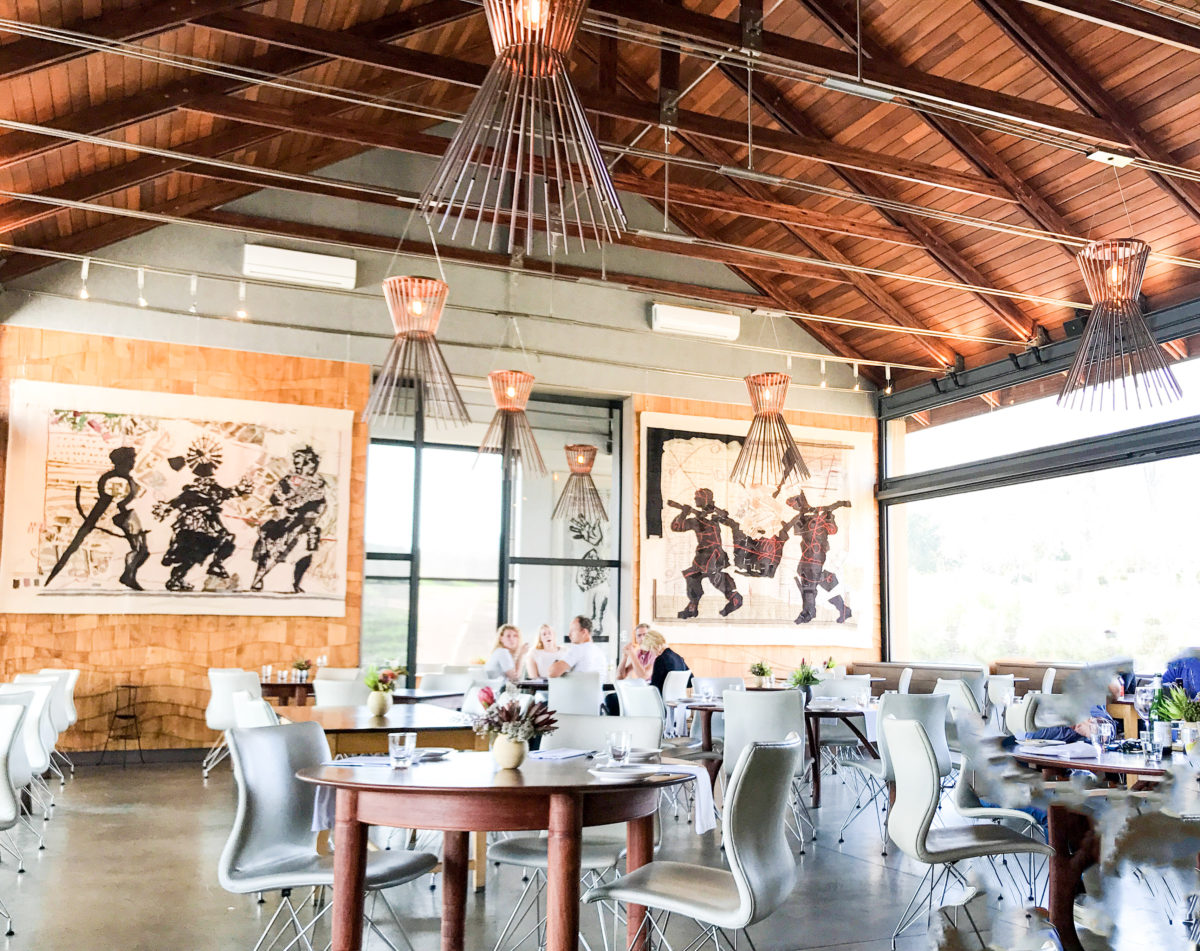
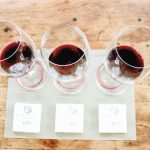
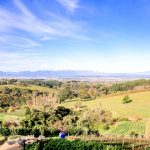
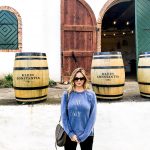
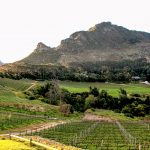
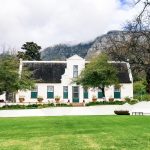
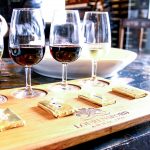
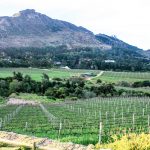
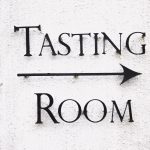
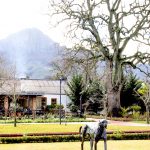
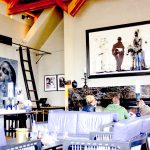
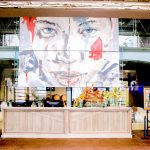
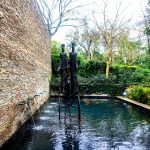
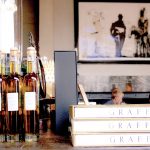
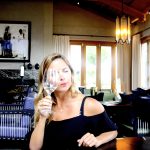

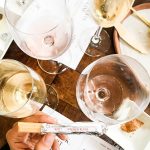
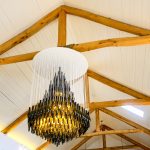
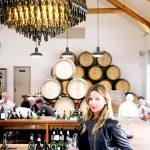
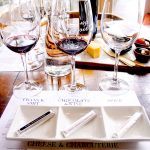
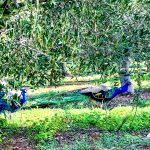
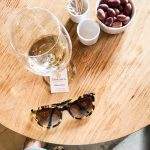
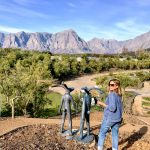
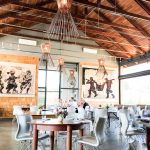
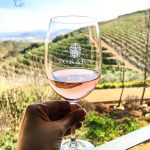
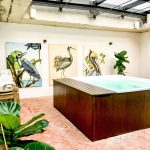
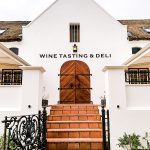
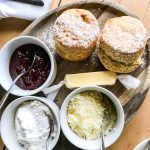
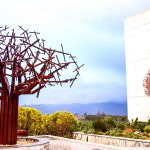
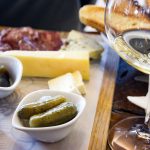
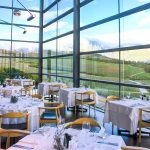
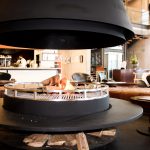
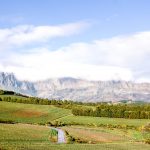
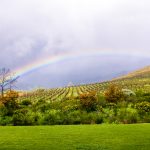
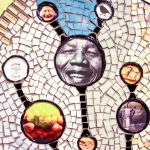
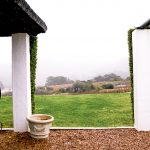
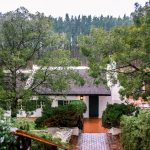
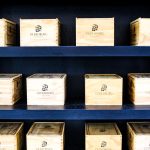
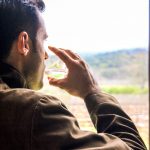

Found in